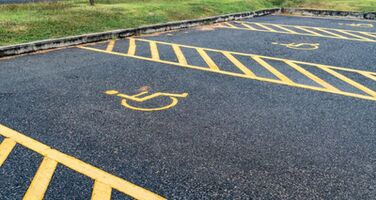
Handicap Placard vs. Handicap License Plates: Which is Right for You in Illinois?
Introduction
When it comes to accessibility and convenience for individuals with disabilities in Illinois, two common options are available: handicap placards and license plates. These tools help facilitate parking and ensure ease of access to various locations. In this article, we'll explore the differences between handicap placards and handicap license plates in Illinois to help you determine which is the right choice for you.
Understanding the Basics: Handicap Placards
What is a handicap placard?
A handicap placard, also known as a disabled parking permit or handicap tag, is a portable sign that can be hung from your rearview mirror or placed on your dashboard. It allows you to park in designated parking spaces, ensuring you have close and convenient access to buildings, facilities, and services.
How to obtain a placard?
Obtaining a disability pass in Illinois involves a straightforward process. You need to complete an application, which usually requires a medical professional's certification of your disability. Once approved, the pass is issued, and you can start using it right away.
Eligibility criteria
To qualify for an Illinois handicap placard, you typically need to have a medical condition that severely impairs your mobility. This may include difficulty walking, breathing, or a variety of other medical conditions. The specific criteria may vary, so it's essential to check with the Illinois Secretary of State's office for the latest requirements.
Handicap License Plates Explained
What are disabled license plates?
Handicap license plates are a permanent vehicle registration option for people with disabilities. They allow individuals to park in designated handicap spaces without the need for a separate permit. The license plates themselves indicate your eligibility for handicap parking.
The process of obtaining license plates
Acquiring disabled license plates in Illinois is somewhat similar to getting a permit. You need to complete an application and provide the necessary medical documentation to prove your disability. Once approved by the Illinois Secretary of State office, you can replace your regular license plates with these special license plates.
Qualifications for license plates
To qualify for disabled license plates, you must meet the same eligibility criteria as for a placard. These criteria are designed to ensure that only individuals with significant mobility limitations receive the benefits of designated parking spaces.
Comparing Placards and License Plates
Now that we understand the basics of both options, let's compare passes and license plates to help you make an informed choice.
Advantages of placards
- Portability: Disability passes are easily transferable between different vehicles, making them convenient for individuals who use multiple cars.
- Temporary use: Passes are an excellent option if your disability is temporary, as they can be easily returned when no longer needed.
Advantages of license plates
- Permanent solution: Disabled license plates are a more permanent solution, eliminating the need to hang or display a pass each time you park.
- Fewer renewals: Unlike placards, which may need to be renewed periodically, license plates are typically renewed with your vehicle registration.
Cost considerations
Both permits and license plates typically have nominal application fees. However, if cost is a concern, permits may be the more economical choice due to their lower initial expense.
Making the Right Choice in Illinois
Choosing between a pass and license plates in Illinois depends on various factors, including your personal preferences and the nature of your disability. Consider the following factors to make the right decision:
- Mobility: If your disability is temporary or you switch between different vehicles frequently, a disability permit may be the more practical choice.
- Permanence: If your disability is permanent, license plates offer a convenient and long-term solution.
- Registration Renewals: Disability permits require periodic renewal, while license plates are renewed along with your vehicle registration.
FAQs
1. How long does it take to get a disability permit or license plates in IL?
The processing time for permits and license plates in Illinois can vary, but it typically takes a few weeks to receive either once your application is approved.
2. Can I use my pass or license plates in other states?
Yes, most states in the U.S. have reciprocity agreements that allow you to use your Illinois-issued disability pass or license plates in other states. However, it's essential to check each state's specific rules and regulations.
3. Can I transfer my disability permit to a different vehicle?
Yes, these are transferable between vehicles as long as you are present in the vehicle while it's parked in a designated space.
4. Are license plates more expensive than passes?
The initial cost of disabled license plates may be higher than that of a placard, but license plates eliminate the need for renewals, which can make them more cost-effective in the long run.
5. Can someone else use my disability permit or license plates?
No, permits and license plates are issued to a specific individual and should not be used by anyone else, even if they are transporting the person with the disability. Misuse can result in fines or revocation of the privilege.
Conclusion
Choosing between a handicap placard and handicap license plates in Illinois depends on your specific needs and the duration of assistance required. Handicap placards are ideal for temporary situations, while license plates offer a more permanent solution. Make sure to consult with your medical professional and follow the state's regulations to ensure smooth and legal access to accessible parking. Now that you're well-informed about Placard vs. License Plates: Which is Right for You in IL, you can make the best choice for your unique situation.
.png)






